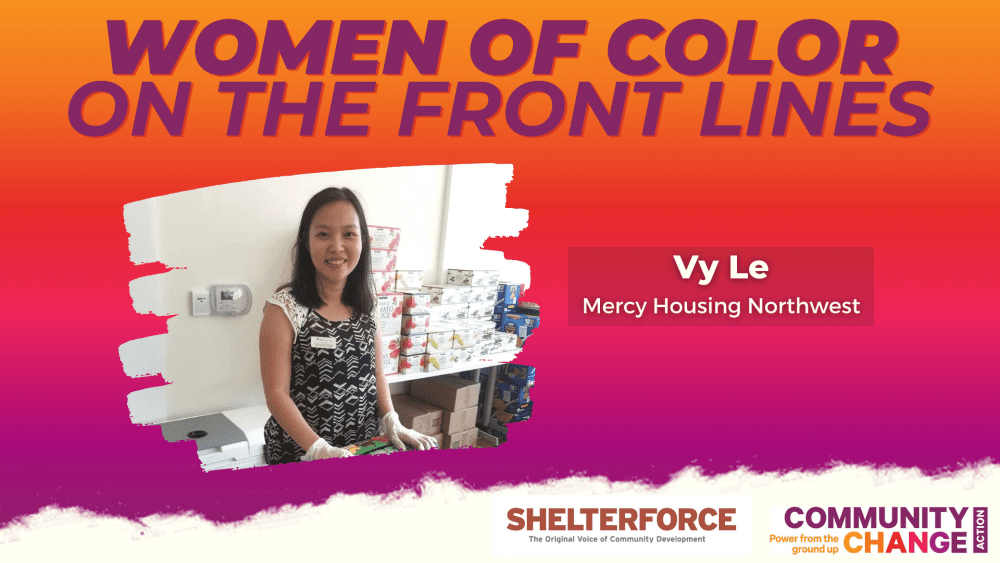
As practitioners who were involved in this vigorous conversation and referenced in the article, we had a series of private discussions about our perspectives and concerns regarding the place vs mobility debate.
Our productive conversations illustrate one of the major challenges in this debate: We spend too little time in quiet, off-the-record dialogue based on mutual respect with a goal of deepening our understanding, and too much time engaged in public debates designed to drive policy agendas based on long-standing organizational agendas. While both have their place, we need to find a better balance. Such a balance would help us to identify our points of common belief and more clearly illuminate perspectives on issues that are still unresolved. We have tremendous housing and community development challenges in our nation today, and to paraphrase Massachusetts Governor Deval Patrick, we don’t have to agree on everything to work together on some things.
In the spirit of collaboration and dialogue we wanted to share our conversation with the audience of Shelterforce and hope that it stimulates further productive dialogue.
Common Beliefs and Concerns:
The Need for Greater Unity
All housing advocates want to improve the circumstances for marginalized families and communities; and in the aftermath of the recession and housing crisis, these families and communities face even greater challenges. Today, our entire field faces serious external threats, from continued budget cuts to the well-organized and vigorous political and legal resistance to any equitable housing reform policies. These conditions require a field of advocates and practitioners who can work together and present an organized front to support the housing needs of the most vulnerable.
The Resource Gap Exacerbates Our Conflicts
Our field does not have the resources it needs, especially given the importance of housing in shaping so many life outcomes. Expenditures for subsidies that tend to favor wealthier homeowners, such as the home mortgage deduction, outpace the entire budget of HUD. We are repeatedly hearing from the fields of education, public safety, the environment, child development and health that “place matters” and “housing matters,” as study after study illustrates the relationship between stable housing and healthy neighborhoods to better educational, health and life outcomes. Initiatives to link the substantial resources of the education and health fields in particular remain limited, despite this awareness and the tremendous cost savings associated with these investments. For example, the United States currently spends $2.7 trillion annually on health, placing us at the top of global spending but with poorer outcomes than most of our peers. Yet, less than 5 percent of our spending goes toward public health, and a microscopic amount of this expenditure addresses critical social determinants, like housing and community development.
The resource gap in our field exacerbates our internal conflicts. Fair housing mobility programs fairly note that these programs remain underfunded. At the same time, community development advocates also fairly state that they face tremendous needs in communities that have continually seen their resources diminish. Housing policy that presents this issue through a “zero sum” lens, in which programming in one domain must take resources from the other side of the field is tremendously problematic.
We need more resources and we need a stronger voice in cultivating resources in partnership with stakeholders in education and health, fields which are intricately tied to our work. We also need a clearer understanding of where all of our various housing and community investments are going.
Additionally, both fair housing advocates and community developers can and must aggressively support “zero cost” fair housing initiatives, such as inclusionary zoning, anti-“snob” policies and dismantling unnecessary local zoning regulations that restrict our housing market for low income communities and communities of color. All communities require stable and affordable housing, and these tools are able to expand access in stronger market areas without taking anything away from weak market places.
Issues Which Require Greater Dialogue:
Respecting the “Multiple Truths” About Communities
When we seek to understand and talk about our communities, there are multiple truths, and respecting and valuing these truths can be tremendously difficult. Marginalized communities face tremendous bias and stereotyping, and we must be cautious in not supporting these biased notions. At the same time, we need to respect the agency of local residents and be sure that we are talking about issues in a way that reflect their perspectives and concerns, balancing both the need to support community pride and assets, and clearly articulating the challenges facing these neighborhoods. This challenge is compounded by the limitations of the English language where so many words are fraught with meaning and baggage, where different communities hear the same words differently, and social media drives us to find shorter and shorter short-hands to express complex issues. There is no simple solution to this challenge and we need continued dialogue and sensitivity to balancing these needs.
The Need to Effectively Use Data Available About Our Communities
We consistently hear about the expanding role of “big data” to sharpen our understanding of communities and inform decision making. Data is more plentiful and more accessible than ever, creating wonderful opportunities to identify challenges, compare and contrast different places, and measure progress. But in the era of big data we still must tread carefully to use data in a way which best serves the communities we support. The sheer volume of data makes it hard for practitioners and even scholars to digest and understand the need to summarize, aggregate, and simplify. Big data can wash away nuance and complexity in ways that are counter-productive. On its face, data is also value neutral, and can be framed or utilized for good or ill purposes. We certainly can’t put the “data genie” back into the bottle, but we also want to be sure to use data strategically.
The Need for Better Articulation of the Both/And Approach
As a field there is a general consensus and support for the “both/and” approach to supporting fair housing and community development. But we are struggling to translate this from concept to pragmatic implementation. How do we resource this approach, especially given the need to make hard choices amidst limited resources? How do we collaborate and coordinate mobility and community development? What is the appropriate mix of units needed for our various communities? How do we implement this approach in metropolitan areas which have widely different market conditions? These are all questions that require continued practice, research and dialogue to answer.
In the spirit of further dialogue we invite the readers of Shelterforce to join in this conversation, to share their thoughts and their experiences with successful models for bridging these questions.
(Photo credit: ‘Promoting Dialogue Ref-113’ by Flickr user William Murphy, CC BY-SA 2.0)





Comments